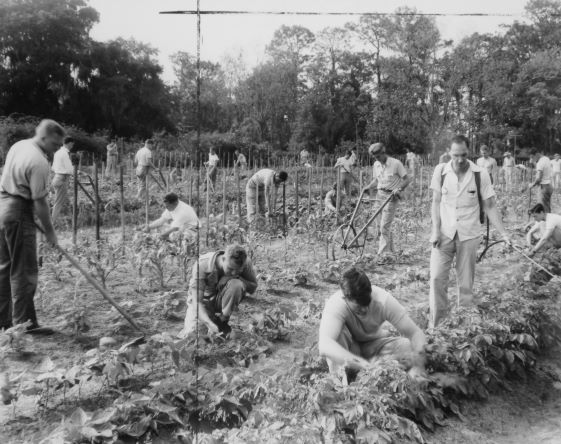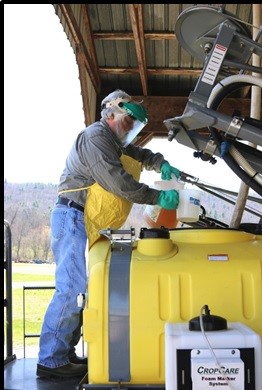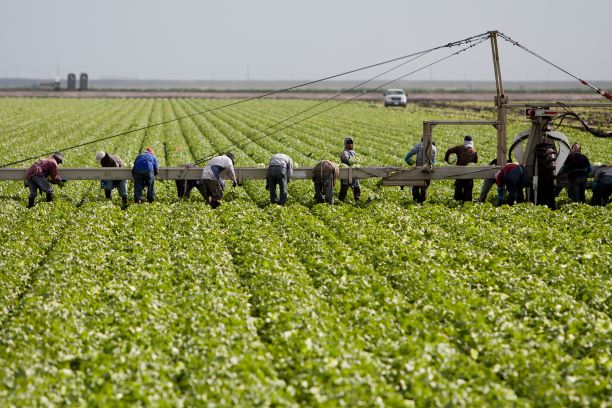Brett Bultemeier, UF/IFAS Pesticide Information Office
The Worker Protection Standard (WPS) applies to farms and operations that produce agricultural plant products. It was designed to protect those employees/workers that might encounter pesticides as part of their duties on that farm. This applies not only to those workers who may directly assist in pesticide applications, but also those who harvest crops or work on pesticide application equipment.
–
Three categories of farm workers that require WPS Training
1) Applicator – someone who has a pesticide license. All WPS protections still apply, but because a license requires a higher level of certification, all license holders can serve as WPS trainers.
2) Handler– directly involved in pesticide application or transports opened pesticide products. A handler is someone that would load pesticides, rinse used pesticide containers, flagging, repair or clean equipment used for pesticide applications.
3) Worker– involved in agricultural activities, but not part of pesticide application. This is someone who might harvest crops from the field, fix irrigation lines, or perform other essential duties on the farm where they are not directly involved with but might be exposed to pesticides as part of their duties. Basically, anyone that enters an area treated with pesticides within 30 days of the application is a worker.
–
Handlers and workers must attend a WPS training each year to be in compliance. Thankfully, compliance training is not overly difficult or time consuming. The training generally consists of having the workers and handlers watch an EPA approved video, be shown the central posting locations around the facility, and be given the opportunity to ask questions. The person that performs the training must either be a licensed applicator or an EPA approved trainer. Remember, every worker or handler must do this training every year!

Prior to Worker Protection Standards (WPS), workers may have been in the field be in the field as spraying occurred.
–
 There are other requirements to WPS, including central posting of treatment schedules, marking treated areas, providing decontamination stations and a host of other safety and communication protocols. A helpful resource to make sure you have the necessary components in place is the How to Comply with WPS Manual produced by the Pesticide Educational Resources Collaborative (PERC) in collaboration with the EPA. It is a helpful guide that walks through what is needed. Additionally, UF/IFAS Extension has a series of videos that review WPS or even serve as a train the trainer module UF WPS Modules.
There are other requirements to WPS, including central posting of treatment schedules, marking treated areas, providing decontamination stations and a host of other safety and communication protocols. A helpful resource to make sure you have the necessary components in place is the How to Comply with WPS Manual produced by the Pesticide Educational Resources Collaborative (PERC) in collaboration with the EPA. It is a helpful guide that walks through what is needed. Additionally, UF/IFAS Extension has a series of videos that review WPS or even serve as a train the trainer module UF WPS Modules.
Don’t let this important requirement pass you by. More importantly, don’t miss an opportunity to improve safety for all your employees. Be sure to schedule training and discuss WPS with your team.
Helpful Links:
How to Comply with the Worker Protection Standard For Agricultural Pesticides – What Owners and Employers Need To Know
UF Online WPS Training Modules
EPA approved Pesticide Handler Training Video
–
Spanish EPA Pesticide Handler Training Video
–
EPA approved Ag Worker Training Video
–
Spanish EPA approved worker Training Video
- Federal Estate Tax and Gift Tax Limits Announced For 2026 - December 19, 2025
- Why Do I Have So Many Open Cows? Causes of Reproductive Failure - December 19, 2025
- Wiregrass Cotton Expo Offers Resources, Research, & Real Solutions for Growers in Southeast – January 22 - December 19, 2025



